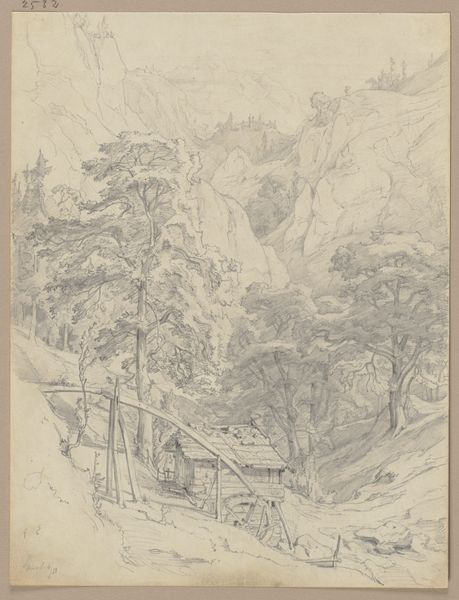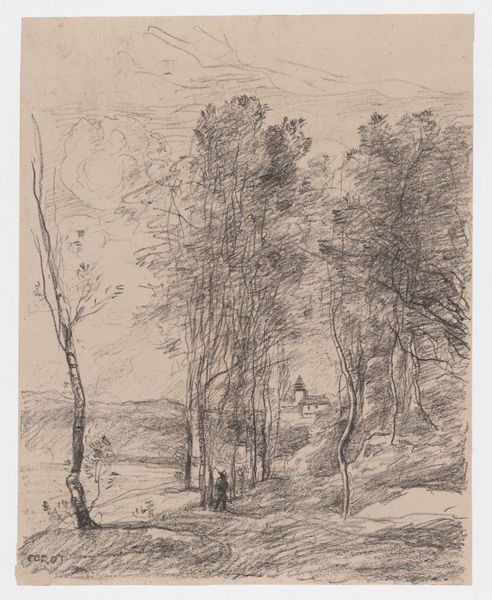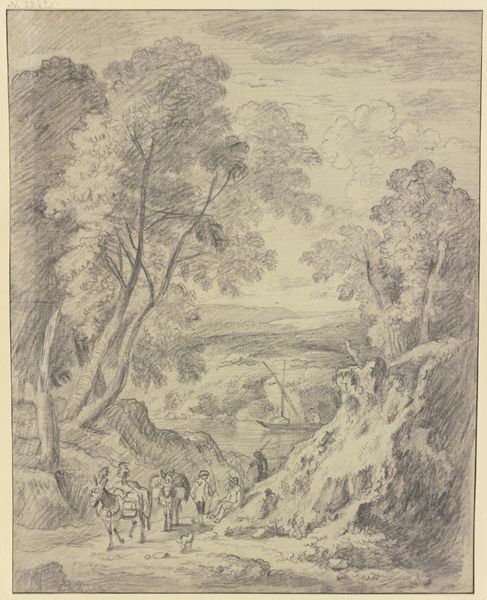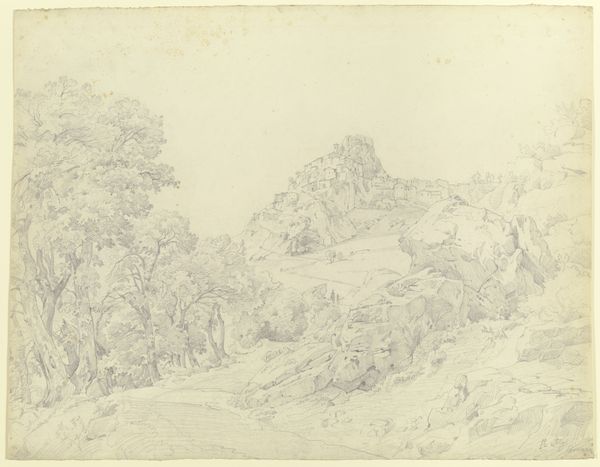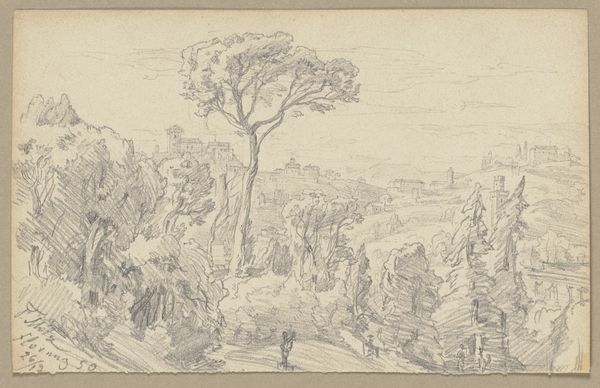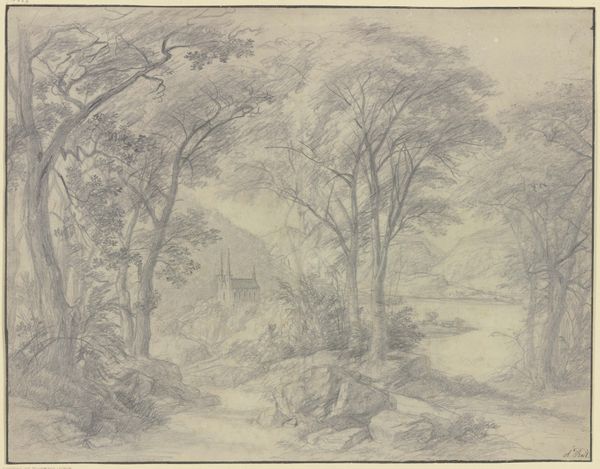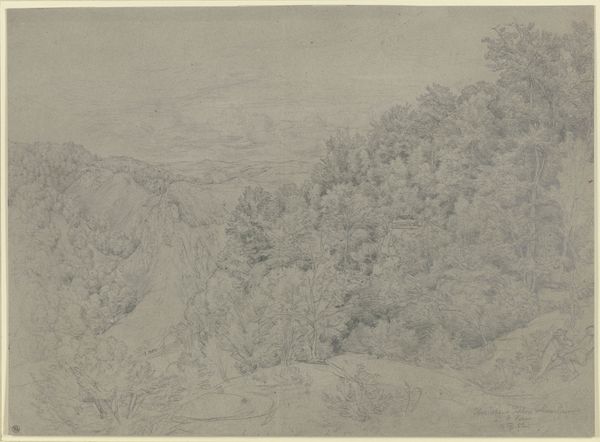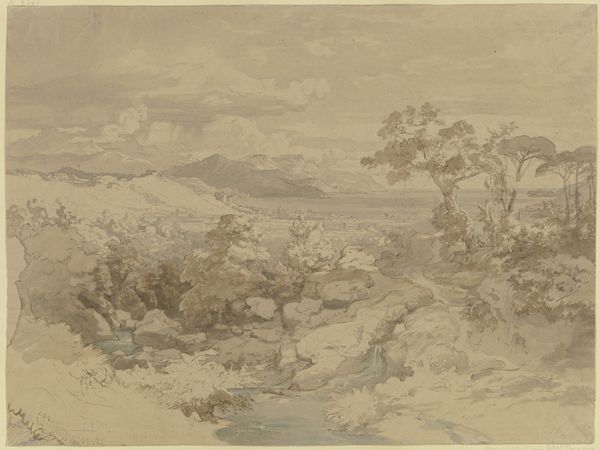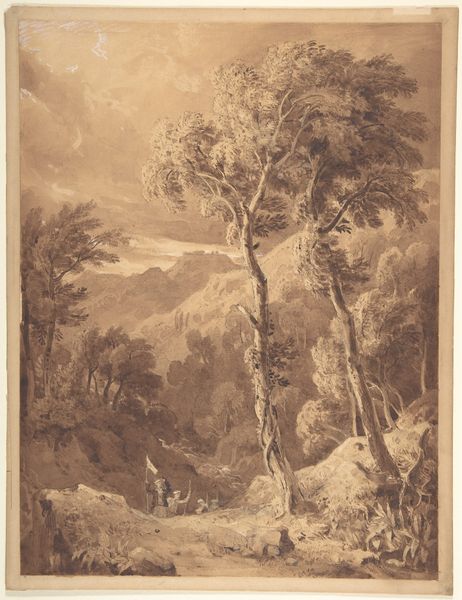
A view of Pozzuoli, seen from the Northeast 1830 - 1889
0:00
0:00
Dimensions: sheet: 14 5/16 x 12 3/4 in. (36.3 x 32.4 cm)
Copyright: Public Domain
Curator: This pencil drawing is titled "A view of Pozzuoli, seen from the Northeast" by Robert Kummer, created sometime between 1830 and 1889. It resides here at the Metropolitan Museum of Art. Editor: My first impression is of a hazy, dreamlike landscape. It feels almost delicate, like a half-remembered scene. I am very curious about how it was done. Curator: Kummer situates us on the periphery, almost as outsiders looking into this vista. Given the Romantic period’s fascination with nature, there is a palpable sense of longing, of desiring connection to this seemingly untouched landscape. I wonder, what does it represent? Does it tap into desires related to the land, its people, and perhaps colonialism? Editor: You raise really valid points. Speaking materially, Kummer utilizes the pencil masterfully to create tonal variety – those softer shades contrasting with sharp lines to give form to the rocks. I appreciate this controlled manipulation; it draws your eye across the vista while creating different surface textures. Do we know anything about his process? Curator: Not explicitly documented, though he undoubtedly chose this vantage point carefully, perhaps repeatedly visiting to truly absorb the light and topography. What interests me is not just the how, but the why, specifically considering Kummer's sociopolitical reality and place in this landscape’s representation. Whose land is being shown here, and for whom? Editor: The choice of such a subtle medium pushes it from mere record to emotional reflection. Pencil inherently communicates the slow application of the material to create form. Curator: I read this as an imagined version, heavily filtered. Romanticism, in many ways, idealized a notion of pristine nature as devoid of any real labour. Editor: Yet you could argue the labour of the artist imbues it with meaning. We need to also consider who could afford to purchase this work. Art patronage then, and to an extent, now dictates which narratives are prioritised. Curator: Precisely. And considering these class and colonial dynamics forces us to unpack any easy assumptions about representations of nature. It pushes us beyond simplistic appreciation, towards engaged interpretation of history and identity. Editor: Looking closely reminds us that it’s made, not found. Seeing each stroke is powerful because it reveals not only a landscape, but Kummer’s choices and his involvement within these materials. Curator: I find myself reassessing my initial response, better equipped now to look beyond simple visual appeal, pushing instead toward deeper cultural engagement. Editor: And for me, a reminder that it’s the convergence of material and intention that elevates art, prompting reflections on both what it depicts and the labour embedded in its creation.
Comments
No comments
Be the first to comment and join the conversation on the ultimate creative platform.
